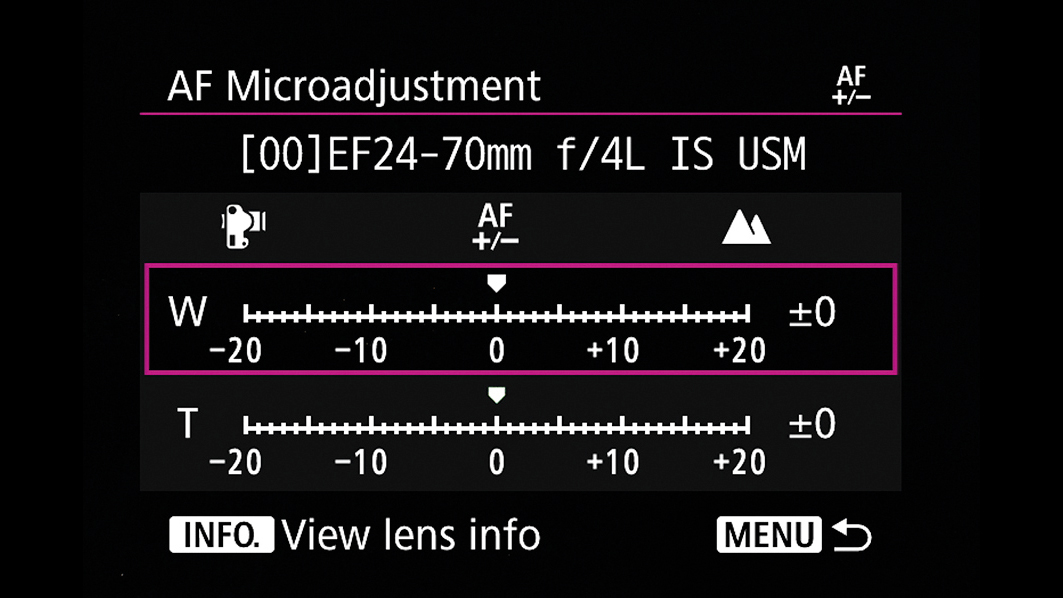
Improves: Sharpness
Even shooting with the best image sensors, with the most megapixels or sturdiest stabilization, may not deliver crisp results if the gear is not checked over time. One issue that is often not addressed is the accuracy of your camera’s autofocus, which suffers as it shifts the optimal focus position of the lens elements over time.
The precision of the AF is then either slightly shifted forward or backwards towards the subject. Fortunately, you don’t have to send the camera to the manufacturer for a lens calibration – you can correct it yourself with the in-camera lens microadjustment feature.
Tutorial
Find this option in the menu’s autofocus section. Here, two parameters are shown: W and T. W is the widest part of the lens view (wide-angle – short focal lengths), while T is the furthest part of the lens view (telephoto – long focal lengths). If you aren’t using a prime lens, both values have to be adjusted to achieve the best results.
1) To determine whether the focus is back or forward shifting, place a subject on a table.
2) To make it easier to identify the focus shifting direction, add a guide next to the subject – a tape measure, for example, is a simple solution to help with precision adjustment. There are specialist aids to help with this process, such as the Spyder LensCal.

3) Now select a focal length and tell the AF to focus on the subject.
4) Analyze the image result and zoom into the subject. If the focus lies slightly behind it, move the parameter settings to the right (positive) or to the left for front focusing.
For optimal results, this process must be repeated until the focus lies accurately on the subject once again.
Take a look at the best mirrorless cameras available today, and see how they compare to the best DSLRs in our DSLR vs mirrorless cameras guide.







